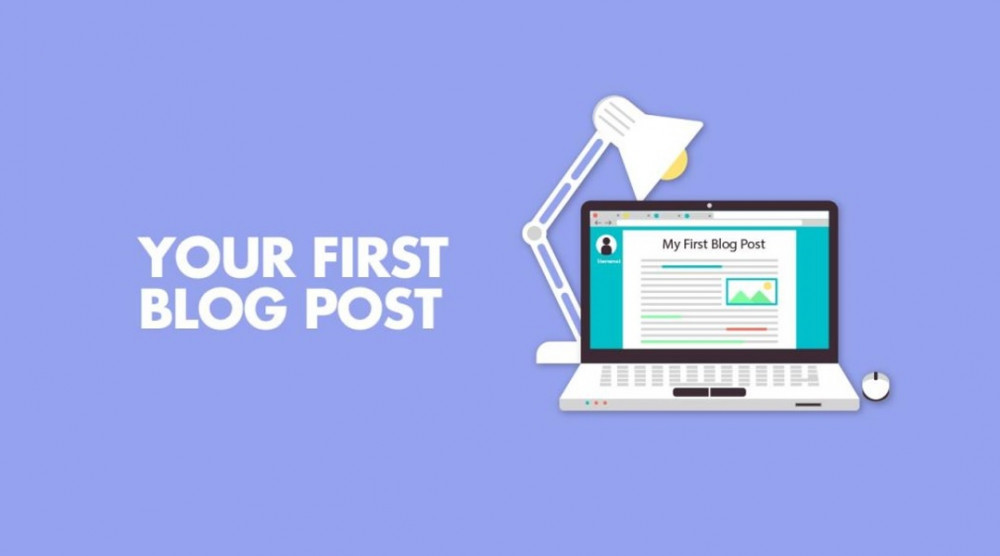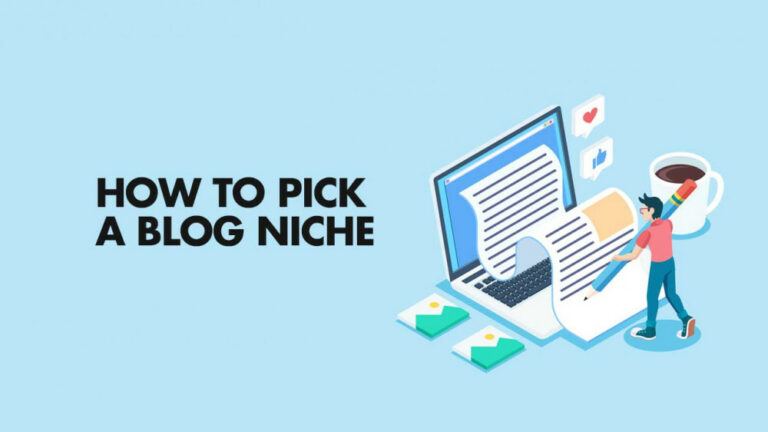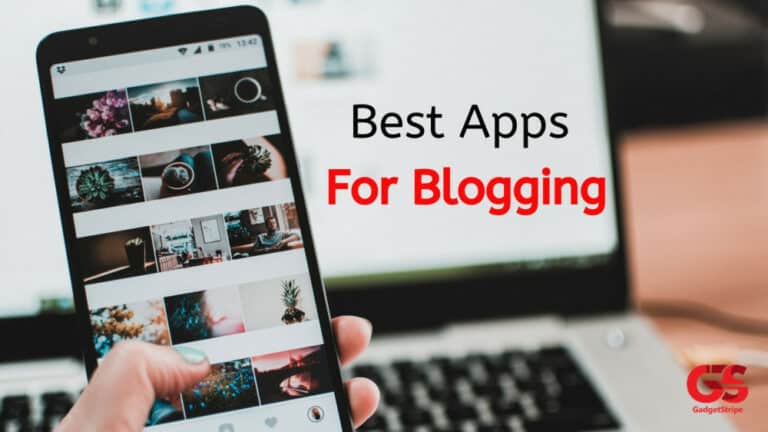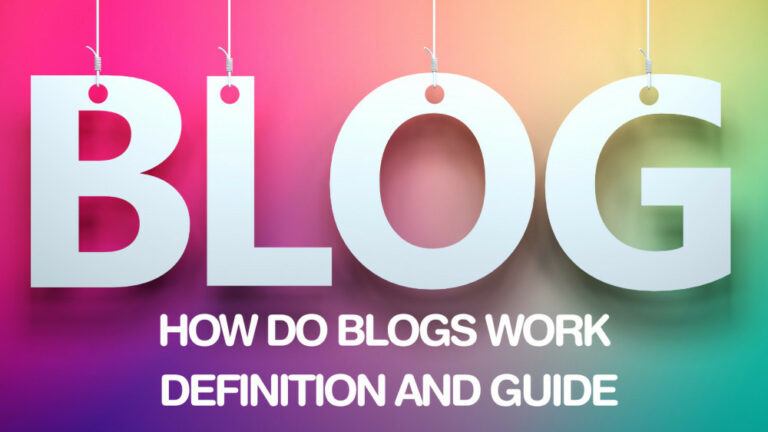How to Write Your First Blog Post
How to Write Your First Blog Post
Starting or resurrecting a blog for your business or organization is a great idea.
Don’t be overwhelmed, you’re on the brink of success already!
Blogs are prospect magnets. They attract potential customers through organic searches, saving you money on advertising and PPC.
Here’s a fun fact:
Companies with blogs generate 67% more leads than those who don’t.
Plus, they provide value to your current and future customers through education about topics related to your industry and your customers’ needs.
But you have to be consistent. It’s like weight loss. You’ll see results increase over time if you stick with a plan.
Want to Start Making Money Online?
Try My #1 Recommendation Program!
After you've set up your blog and applied a theme, you'll need to start writing material. If you haven't yet made it that far, this post will show you how to set up a blog in under 15 minutes with no technical skills.
Your first post is generally the most difficult to write. No matter how much time you've spent identifying your niche and creating blog entries, the first post might be frightening because there's so much riding on it.
When I was writing my first post for the Gone Foreign Project, I felt a lot of pressure. Even though I knew that this one post wouldn't determine the site's success, I was aware that the first post would be the first impression that most visitors would have of my site. The tone for everything that follows is set by the first post.
As a result, I spent a significant amount of time researching how to produce the ideal first blog article. I researched what should be included, what should be avoided, and how the initial post should be structured.
What I discovered is that there are a few parts that must be included, a few that can be included, and a very conventional framework to follow.
Don't believe me when I say it's that simple? Take a look at how well my first post turned out.
I'll share what I've learnt about writing a winning first blog post in this piece.
Approach
Before I get into what information you should include in your first blog post, let's talk about how you approach writing and communicating with your readers.
I can't emphasize this enough: a good blog's writing style is completely different from business communication. Blogs are popular because they are informal and real.
From the outset, make sure you're writing in your own unique voice. It's not appropriate to use your blog to pretend to be someone you're not.
Don't try to pass yourself off as an expert in your field if you aren't. Present yourself as someone who is learning and chronicling their journey if you are really learning.
What I mean is that readers can smell nonsense. They'll notice right away, and while they might stick around to read one item that's beneficial, they won't feel connected to your blog, and you won't convert them from readers to fans.
The internet is a hive of activity. There are a lot of charlatans and phony gurus in certain fields. You must stand out from the crowd if you want your blog to prosper. Unfortunately, in the age of the internet, you can only do so by being unique and authentic from the start.
Your readers have come to your blog to read original thoughts voiced by a real person.
If you can offer something unique to your viewers that they won't find on other sites, they'll become fans. Fans will overlook grammatical and spelling errors in your blog posts (within reason). Fans will exchange ideas with their social networks, assisting in the growth of your site.
At Gone Foreign Project, I make every effort to ensure that we display our humanity and honesty in every post. Although it's tempting to promote ourselves as travel gurus, I'll never be able to establish such a rapport with my audience.
The truth is that we're not seasoned travellers; instead, we're two people embarking on their first long-term backpacking trip.
It will not appear authentic if we exhibit ourselves as anything else than amateurs getting ready.
We have an opportunity to connect with the audience if we claim our truth. We generate empathy by sharing our powerful emotions, and we create a real back-and-forth relationship with the audience by asking for guidance and comments on what we don't know (or could have missed).
The way you approach your audience is perhaps more crucial than the content of your initial post. Always keep in mind that you must be genuine and true to yourself. Your visitors, as well as yourself, deserve it.
I believe the cover photo for that article conveys our authenticity better than any words I could possibly say. You can tell in that snapshot that we are real individuals who aren't ideal. That hideous selfie demonstrates that we are not wannabe influencers who edit and filter our lives and are not ashamed to expose our actual selves.
Please Introduce Yourself First!
Your initial blog article should serve as an introduction to your readers. If your website is relatively unpopulated, this is the greatest time to communicate with your visitors.
Typically, your blogs should focus on discussing a specific topic or helping your visitors solve a specific problem. Your introduction post is unique in that you can be selfish in this one post and area. You have the opportunity to tell the reader everything about yourself.
Of course, you must carefully consider what you want to tell readers about yourself. You want to demonstrate to them that the blog is run by a real individual.
You have a great chance to connect with readers by giving some personal facts in the proper way, so take a couple of words to introduce yourself.
Want to Find Out How To Start Your Home-Based Business?
Try My #1 Recommendation Platform!
Explain who you are as a person and how your experiences have led you to this point in your life, where you are writing this essay. This section of the post is primarily about you; you'll go into more detail about the blog and the material later. Concentrate on introducing yourself right now. What is your name, and who are you? Remember that the more of yourself you can offer, the more a reader will feel connected to you.
If at all feasible, provide your readers with more than just words. A few photos of yourself go a long way toward demonstrating to readers that the blog is run by a real person.
I spent a lot of time thinking about what I wanted to say about Mariella and myself while I started writing this section of the GFP introduction.
I wanted to provide some background knowledge to the reader without boring them. I didn't want to appear whiny, so I tried to explain the issues that prompted us to launch the Gone Foreign Project. I'm still not sure if I achieved the desired tone, but I'm pleased with the end result.
Now Introduce Your Blog
If this is your first blog post, I hope you have a good idea of what you want to write about.
It's time to share that information with your readers in the second half of your introduction piece. It's difficult for a visitor to predict what your blog will feature in the future if it has little or no material.
Don't leave it up to them to figure it out. Explain to readers what they may expect from your blog in this area of your post.
- Tell them what you'll be writing about.
- Let them know when you'll be posting.
- Tell them about the next piece you'll be publishing.
- So, what will you be writing about on your blog?
Remember that you have no idea what you'll be writing about when you first start your blog. I'm sure you have some ideas for topics to write about, but that's just the start. As you start writing and building an audience, they will provide you feedback that will help you shape your material.
You'll learn what material resonates with your audience over time, and you'll learn how to create more of it. As you receive more and better feedback from a larger and larger audience over the months and years, your material will become more refined.
As a result, don't go insane in this part. Don't reveal your exact content strategy for the next two years to your audience. Tell your readers nothing about your content strategy for the following two months.
Instead, tell your audience what you'll be writing about in general.
For example, we write non-bullsh*t travel material. We offer itineraries, guides, and advice based on our personal travel experiences in Southeast Asia. We present our vacation experience without any filters.
Without getting into the specifics of what the content will be, it's clear what type of stuff you can expect from Gone Foreign Project based on this description.
So, in your introduction article, this is the appropriate degree of information to convey what your blog will be about.
What Is The Tone Of Your Voice?
Learning to find your voice is one of the most difficult aspects of blogging. Your writing should reflect your personality and uniqueness. It's what distinguishes your blog from others. Some bloggers use comedy to express themselves, while others are more news-oriented.
The tone you choose will be determined by the objective of your blog as well as your intended audience. If you're writing a blog for a professional audience, your tone will naturally be more formal. If you're creating a personal blog, you have greater discretion in terms of what's acceptable. Get to know your target market. Then you may fine-tune your voice so that it truly communicates with them.
Create A Posting Strategy And Timetable For Your Blog
Before you jump in and start blogging, you should develop a blog posting plan. Take it from all the previous bloggers: they'll all tell you the same thing: go ahead at the start.
That is to say, you should have at least 5–7 blog posts ready to publish as soon as your website is live. This will let your viewers get a true sense of who you are and the goal of our blog right when your website goes up. They won't have to wait for you to come up with a strategy every week.
It's a good idea to use a website scheduling engine that will automatically publish your content once a week so you don't have to do it manually every time. You can auto-schedule your posts from within your WordPress if you use a solid host, such as Bluehost.
If your website doesn't have an automatic scheduling engine built-in, CoSchedule is a fantastic program that will not only publish your blog entries but also your social media posts for you!
Speak To Your Audience
By this point, your readers should know a little something about you and your site.
If they're still reading, there's a good chance they're one of your target demographics. Or they're curious about what you have to say for some other reason.
You should address your audience in the next part. Make it clear to the reader who you're writing for. They might share your article if they know someone who meets that description, and if your reader fits that description, they might stay long enough to subscribe to your mailing list.
You may make a connection with the people who fit your target audience by describing them.
In this area, I like to go a step farther than simply describing my target demographic. I also set my audience's expectations in the Gone Foreign Project introduction piece.
In my first post, I stated that I want an audience that is interested in what I have to say and will communicate with me. I stated that making the site great necessitates audience involvement.
In an introduction, I believe it is appropriate to include your audience's expectations. Your readership doesn't know who you are, and your blog isn't old enough for you to obtain a sense of social standards from prior postings.
Make it clear to your audience what you expect from them. Commenting, direct communication, and guest posting are all examples of this.
I tried to make it obvious in my introduction for my first blog post that I'm a person, and that there would be mistakes in my writings. I also tried to make it obvious that anyone in the comments can correct me at any time. I'm hoping that this will contribute to the development of an open, collaborative environment that encourages constructive input.
If this is the appropriate move, only time will tell.
Address Your Goals
Finally, I included a section outlining my objectives.
You previously stated the purpose of your blog to your reader. That offers people an indication of what kind of information will start appearing in your feed, but it doesn't tell them what you're attempting to accomplish.
I was brutally honest here for the Gone Foreign Project. I mentioned that the primary purpose of the site is to provide the best, most authentic travel content available on the internet, but that the secondary goal is to make money.
Many individuals, I believe, avoid that point for no apparent reason. If you tell your followers that you want to make money with your blog, but that you won't sacrifice your principles or the quality of your content to do so, they'll understand.
Even better, people won't be offended if they visit your site and see adverts embedded in the content.
Your readers are an important part of your journey; make sure they understand where they're going.
Are You Tired Of Scams?
Try The Most-Trusted Training Platform To Make Money Online!
Include A Link To Your Social Media Pages
Your blog will gain momentum and, perhaps, a loyal following over time. Make sure all of your social network accounts have “share buttons” on your blog. This makes it simple for readers to share your content, increasing engagement and interest. Check and double-check all of your social links before pushing “Publish” on your first blog entry.
Proofread
Before submitting the first blog entry, every writer should internalize one golden rule of blogging. Always proofread and edit your work thoroughly, more than once if necessary, this makes you sure that it is free of typos and embarrassing grammar issues.
A poorly written piece, particularly one with several grammar errors, appears amateurish and is a major turn-off for readers. Even if you've gone through your draft and everything appears to be flawless, you should proofread again as soon as the post is live to ensure that there were no formatting errors during uploading.
Include Images, Videos, And Interactive Content
Even when readers are really interested in what you have to say, large blocks of text can be daunting and exhausting for them. Add images, videos, or even interactive content like infographics, slideshows, or quizzes to break up the text into manageable chunks. This increases reader engagement and gives them more chances to share your post.
Don't forget to include a photo of yourself as well as a brief bio. This gives your site credibility and trust, which can only help you attract new readers.
Your blog will have to stand on its own two feet, but by referring to useful, high-quality sites, you can make it stronger and more believable. Show your viewers that you care by providing them with useful internet resources. Don't just link to Wikipedia; go further and provide a rich experience through your content.
Encourage Feedback And Comments
It's not a good idea to make your blog a one-way street. Facilitate dialogue with your readers to truly engage them. Include a comment box, allow readers to subscribe to your site, and ask readers questions to encourage them to provide feedback. Even if the input is bad, respond to it whenever it is appropriate or required.
Show your readers that you welcome and value their feedback – after all, they are your visitors, your audience, and your source of inspiration all in one. Your blog will be stronger if you have a close relationship with your readers.
It Is Terrifying To Write The Truth
My most honest, raw writing, on the other hand, only appears in works when I dare to divulge the deep stuff…to bare my soul. It doesn't matter if it's fiction or nonfiction; it's the stories that tell the truth, stories that allow me to open myself to the great…
The Last Sentence Is The Most Important One!
You should be at the conclusion of your first post at this point.
If you include the components I discussed in this piece, your post should be lengthy but comprehensive and entertaining.
Readers who make it to the conclusion of this piece will become devoted followers of your blog. Make sure you don't miss out on this early opportunity to turn visitors and readers into fans.
Include a call to action at the end of your blog. You should include a form to collect your reader's email address so you can start creating your mailing list right away.
Don't miss out on the opportunity to interact with loyal fans at the end of a long post.
Conclusion
This post turned out to be much longer than I had anticipated.
I guess I experienced a productive procrastination burst since I was so concerned about writing my introduction for my first post. To avoid having to write that post, I came over here, did some research, and wrote what you're reading now.
At the very least, we now know how to write a great first blog article. The crucial elements are, in case you've forgotten:
- Authenticity – engage with your readers honestly and never pretend to be someone you aren't.
- Introduce yourself to the reader by telling them who you are and what your history is.
- Introduce your blog to the reader by telling them what you'll be writing about and when you'll be publishing.
- Tell the reader who your ideal reader is and what you expect from them by addressing the audience.
- Address your objectives — notify your readers about your blog's goals. What are your objectives?
- Finish strong – if someone has read all the way through, invite them to join your mailing list.
I trust you enjoyed this article about How To Write Your First Blog? Would you please stay tuned for more articles to come? Take care!
JeannetteZ
Want to Learn How to Build Your Own Home-Based Online Business & Start Making Money Online From Your Comfortable Couch?
Try Wealthy Affiliate!
Your Opinion Is Important To Me
Thoughts? Ideas? Questions? I would love to hear from you. Please leave me your questions, experiences, remarks, and suggestions about How To Write Your First Blog in the comments below. You can also contact me by email at Jeannette@WorkFromAnywhereInTheWorld.com.
You may also enjoy the following articles:
How To Get Rid Of Blogging Stress?
Ultimate Guide To Blog Comment Traffic
How To Choose The Best Blogging Platforms













